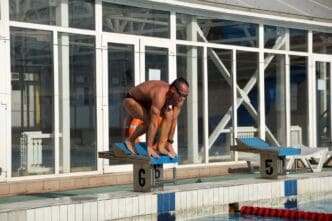For runners pounding the pavement from Miami to Minneapolis, the relentless pursuit of faster times and fewer injuries often leads them down a singular, high-impact path. The secret to breaking this cycle and achieving new levels of performance, however, may not be found on the track, but in the pool. Elite swimmers and savvy endurance athletes, particularly those in year-round training climates like South Florida, have long understood that incorporating swimming into a running regimen is a powerful cross-training tool. This strategy allows athletes to build formidable cardiovascular endurance and muscular strength without the joint-jarring impact of running, leading to enhanced recovery, reduced injury risk, and ultimately, a significant competitive edge on race day.
The ‘Miami Method’: Why Swimming is a Runner’s Secret Weapon
The philosophy behind integrating swimming is simple: train smarter, not just harder. Running is a repetitive, high-impact activity that primarily stresses the lower body. Over time, this can lead to muscular imbalances, overuse injuries, and burnout.
Swimming provides the perfect counterbalance. The buoyancy of water effectively eliminates impact, giving your joints, bones, and connective tissues a much-needed break from the constant pounding. This makes it an ideal form of active recovery.
Instead of a complete day off, a light swim can help flush lactic acid from your muscles, reduce inflammation, and promote blood flow. This process accelerates tissue repair, meaning you can return to your next running workout feeling fresher and more prepared to perform.
This approach, perfected in environments where pools are as accessible as tracks, is about building a more resilient, well-rounded athlete. It’s a shift from a one-dimensional training plan to a holistic system that builds strength and endurance from every angle.
The Physiological Payoffs: How Swimming Translates to Running Speed
The benefits of swimming for runners are not just theoretical; they are grounded in physiological science. The unique demands of moving through water trigger specific adaptations that directly enhance your ability to run faster and longer.
Unlocking Aerobic Capacity Without the Pounding
At its core, endurance running is a test of your aerobic system’s ability to deliver oxygen to working muscles. Swimming is one of the most effective ways to develop this system, often referred to as your VO2 max. Because it engages nearly every major muscle group, your heart must work incredibly hard to pump oxygenated blood throughout the body.
Furthermore, swimming forces a pattern of rhythmic, controlled breathing. This practice strengthens your diaphragm and intercostal muscles—the muscles responsible for respiration. Stronger respiratory muscles mean you can take in more oxygen with each breath and stave off fatigue more effectively during the final miles of a race.
Building a Stronger Runner’s Chassis
While running primarily builds leg strength, it often neglects the upper body and core. A weak core can lead to a breakdown in running form as fatigue sets in, causing hips to drop, posture to slump, and efficiency to plummet. Swimming is a full-body workout that builds the comprehensive strength needed for powerful, efficient running.
The resistance of water forces you to constantly engage your core to maintain a stable, streamlined position. Strokes like freestyle and backstroke develop strength in the lats, shoulders, and back, which contributes to a more powerful arm swing and an upright posture. A strong upper body prevents wasteful side-to-side motion, ensuring all your energy is directed forward.
Swimming also strengthens the glutes and hips through the kicking motion. These muscles are the powerhouse of the running stride, and strengthening them in a low-impact environment can help prevent common ailments like IT band syndrome and runner’s knee.
Enhancing Flexibility and Mobility
Running involves a relatively limited range of motion, which can lead to tightness, particularly in the hamstrings, hip flexors, and calves. Swimming, by contrast, encourages long, fluid movements through a wide range of motion.
The rotation of the torso in freestyle and the long reach of each stroke help to improve thoracic (upper back) spine mobility and shoulder flexibility. This improved mobility can translate to a more open, efficient running posture, freeing you from the hunched-over form that often accompanies fatigue.
Your Blueprint for Pool-Based Cross-Training
Integrating swimming into your routine doesn’t require you to become a competitive swimmer overnight. The key is to be intentional with your pool sessions, aligning them with the goals of your overall training plan. Here are three types of workouts you can use.







